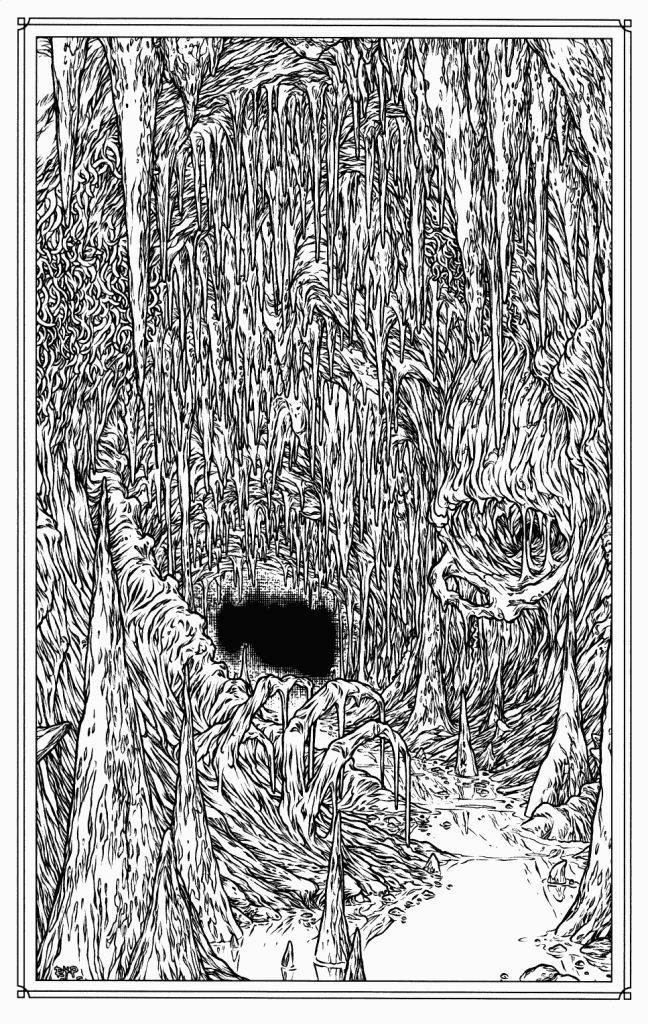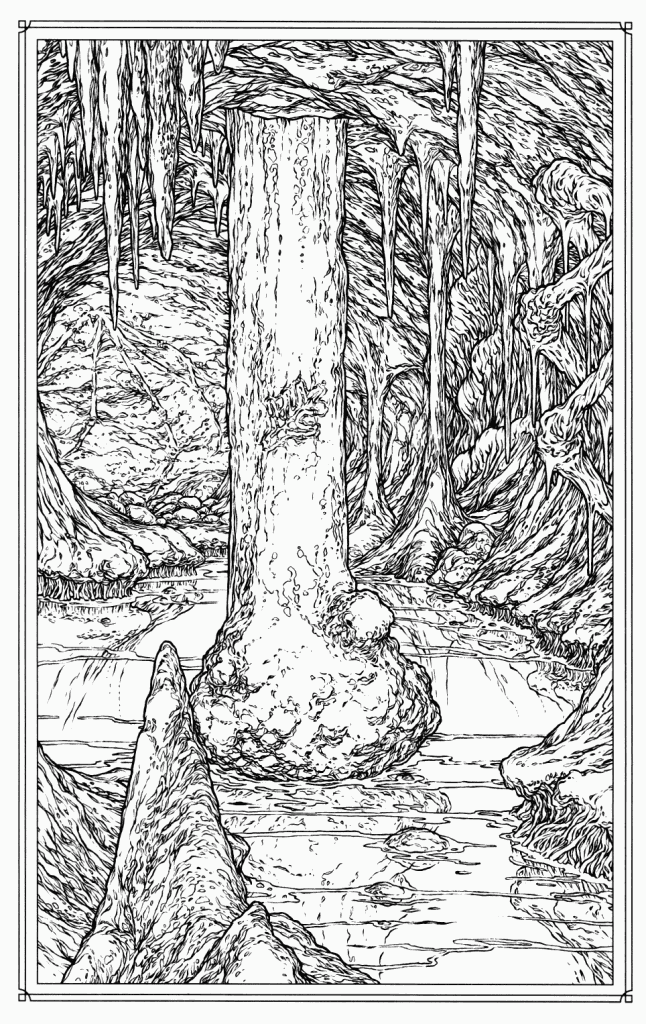I’m pretty late to the game when it comes to Yuggoth Cultures and Other Growths, by Allan Moore. It was released as a three issue comic in 2003 by Avatar Press, and I remember seeing it in the comic stores at the time, thinking it looked very cool, and then promptly forgot all about it. The issues were collected together and released as a trade paperback in 2006, and yet again I missed out. It wasn’t until last week that I stumbled onto a reference to the comic and so I finally checked it out.
The title is a allusion to H.P. Lovecraft’s Fungi from Yuggoth, his collection of 36 sonnets (I know Lovecraft has deific status amongst gamers and can do no wrong, but to tell you the truth I’m not really a big fan of his sonnets and poetry). Moore imagined himself as taking cuttings from those fungi (stealing ideas here and there if you will – but there’s no shame in that), and culturing them to see what could be grown. It’s a great metaphor, and in general it works. It reminded me of a concept album in comic book form – you might not like every song on the record, but you dig where the band was going with it.
Just check Juan Jose Ryp’s wraparound cover (click on it for the full size)! The frenetic action, crazy colors and hyper detail are perfect for the madness inducing subject matter (I see Cthulhu, Nyarlathotep, a gug, a pack of ghouls, a flying polyp, and of course mi-go). As ideal as that picture is for a blog about monsters, it’s not the piece I wanted to write about.

In the same issue Ryp also illustrates Moore’s poem, Zaman’s Hill, with two pieces that are the perfect representation of the underdark, maybe even the platonic ideal of the underdark (of which all other underdarks are shadows). My penchant for hyperbole aside, when I flipped to this page I was immediately struck by the thought, ‘so that’s what the underdark looks like’ (click on the pictures to see for yourself). And that’s a bit odd, since 25 years of D&D illustrations haven’t made me think that. Considering that the underdark plays such a huge role in the imagination of D&D, there are very few visual representations of it (there are many pictures of the creatures that live there though). That’s probably because there just aren’t that many landscapes in D&D illustration in general (even though Larry Elmore was clearly a master of the style). And that makes sense. Monsters are just more interesting (I am obsessed with them) and more immediate then the places which spawn them. But a great picture can transcend that generalization and I think that Ryp’s does.
In the D&D game I currently play in, my character the Jack of Clubs and his companions are working their way through a 4e adaptation of The Night Below boxed set. We’ve fought all manner of subterranean beasts (troglodytes, trolls, grell, and a behir) and I’ve never had trouble playing out those epic struggles in my mind. But when it comes to the underdark itself I feel as though my mind’s eye has formed only a crude backdrop against which our adventures play out. These pictures have changed that. My imagination is already filling those unsettling caverns with chanting Troglodytes, the maddening psionic hum of illithid mind-song, and the glittering trails of abolethic mucous chariots. The next time someone in your game wants to know what the underdark looks like, you have your answer.
But that’s not all. Yuggoth Cultures made me realize that the fungi’s spores are still spreading, sending out shoots and occasionally, twisting back together. Many of Lovecraft’s ideas are so pervasive in popular culture they sometimes come about full circle to meet each other face to face. Way back in Dragon 324 (when you could still hold the magazine in your hands) James Jacobs had a great article on Lovecraft’s influence on D&D where he specifically mentions the Lovecraftian influence on the creation of the underdark… and that’s how a pair of pictures in a comic completely unrelated to D&D come to perfectly represent one of the game’s greatest locales. Two mutant growths, sired from the same rhizome, but cultured in entirely different mediums, turn out to be twins.

